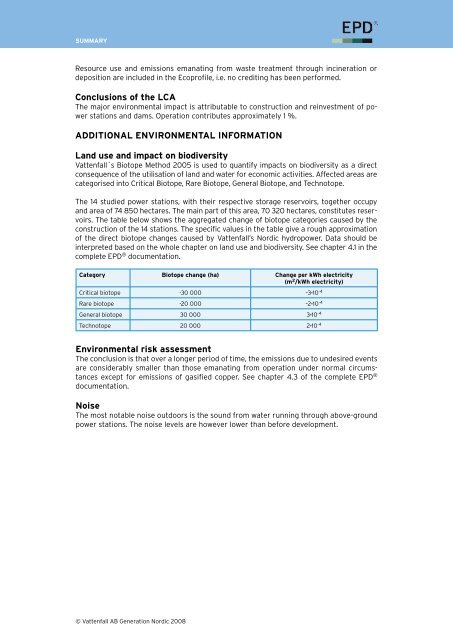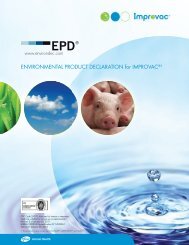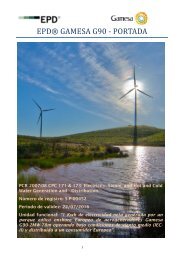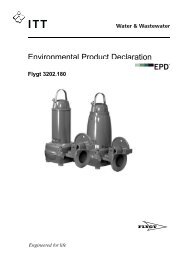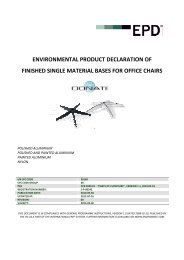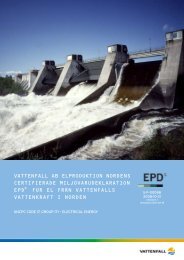Vattenfall aB GeneRatIOn nORDIC CeRtIfIeD enVIROnmental ...
Vattenfall aB GeneRatIOn nORDIC CeRtIfIeD enVIROnmental ...
Vattenfall aB GeneRatIOn nORDIC CeRtIfIeD enVIROnmental ...
You also want an ePaper? Increase the reach of your titles
YUMPU automatically turns print PDFs into web optimized ePapers that Google loves.
Summary<br />
Resource use and emissions emanating from waste treatment through incineration or<br />
deposition are included in the Ecoprofile, i.e. no crediting has been performed.<br />
Conclusions of the LCA<br />
The major environmental impact is attributable to construction and reinvestment of power<br />
stations and dams. Operation contributes approximately 1 %.<br />
ADDITIONAL ENVIRONMENTAL INFORMATION<br />
Land use and impact on biodiversity<br />
<strong>Vattenfall</strong>´s Biotope Method 2005 is used to quantify impacts on biodiversity as a direct<br />
consequence of the utilisation of land and water for economic activities. Affected areas are<br />
categorised into Critical Biotope, Rare Biotope, General Biotope, and Technotope.<br />
The 14 studied power stations, with their respective storage reservoirs, together occupy<br />
and area of 74 850 hectares. The main part of this area, 70 320 hectares, constitutes reservoirs.<br />
The table below shows the aggregated change of biotope categories caused by the<br />
construction of the 14 stations. The specific values in the table give a rough approximation<br />
of the direct biotope changes caused by <strong>Vattenfall</strong>’s Nordic hydropower. Data should be<br />
interpreted based on the whole chapter on land use and biodiversity. See chapter 4.1 in the<br />
complete EPD ® documentation.<br />
Category Biotope change (ha) Change per kWh electricity<br />
(m 2 /kWh electricity)<br />
Critical biotope -30 000 –3 . 10 -4<br />
Rare biotope -20 000 –2 . 10 -4<br />
General biotope 30 000 3 . 10 -4<br />
Technotope 20 000 2 . 10 -4<br />
Environmental risk assessment<br />
The conclusion is that over a longer period of time, the emissions due to undesired events<br />
are considerably smaller than those emanating from operation under normal circumstances<br />
except for emissions of gasified copper. See chapter 4.3 of the complete EPD ®<br />
documentation.<br />
Noise<br />
The most notable noise outdoors is the sound from water running through above-ground<br />
power stations. The noise levels are however lower than before development.<br />
© <strong>Vattenfall</strong> AB Generation Nordic 2008


